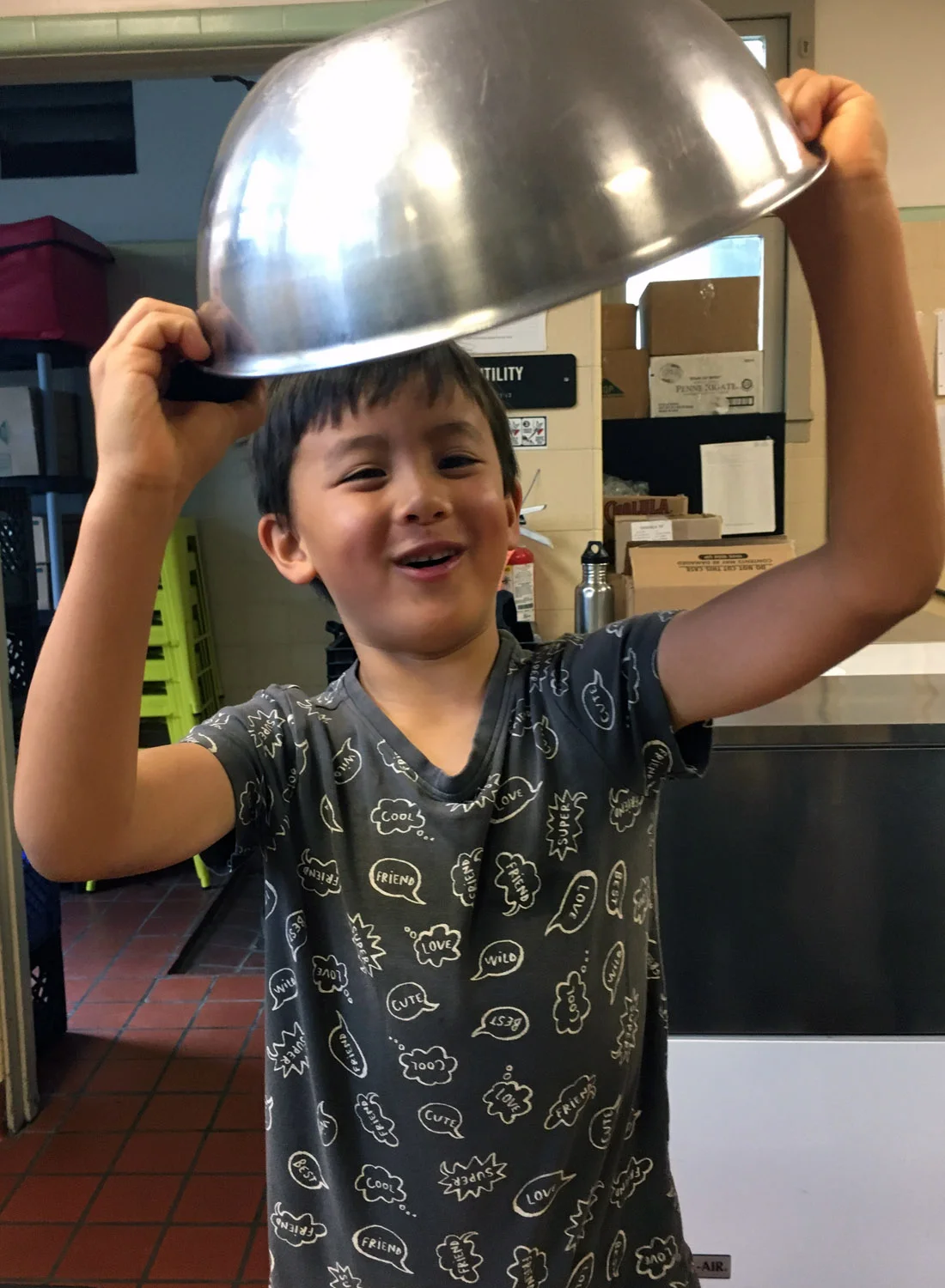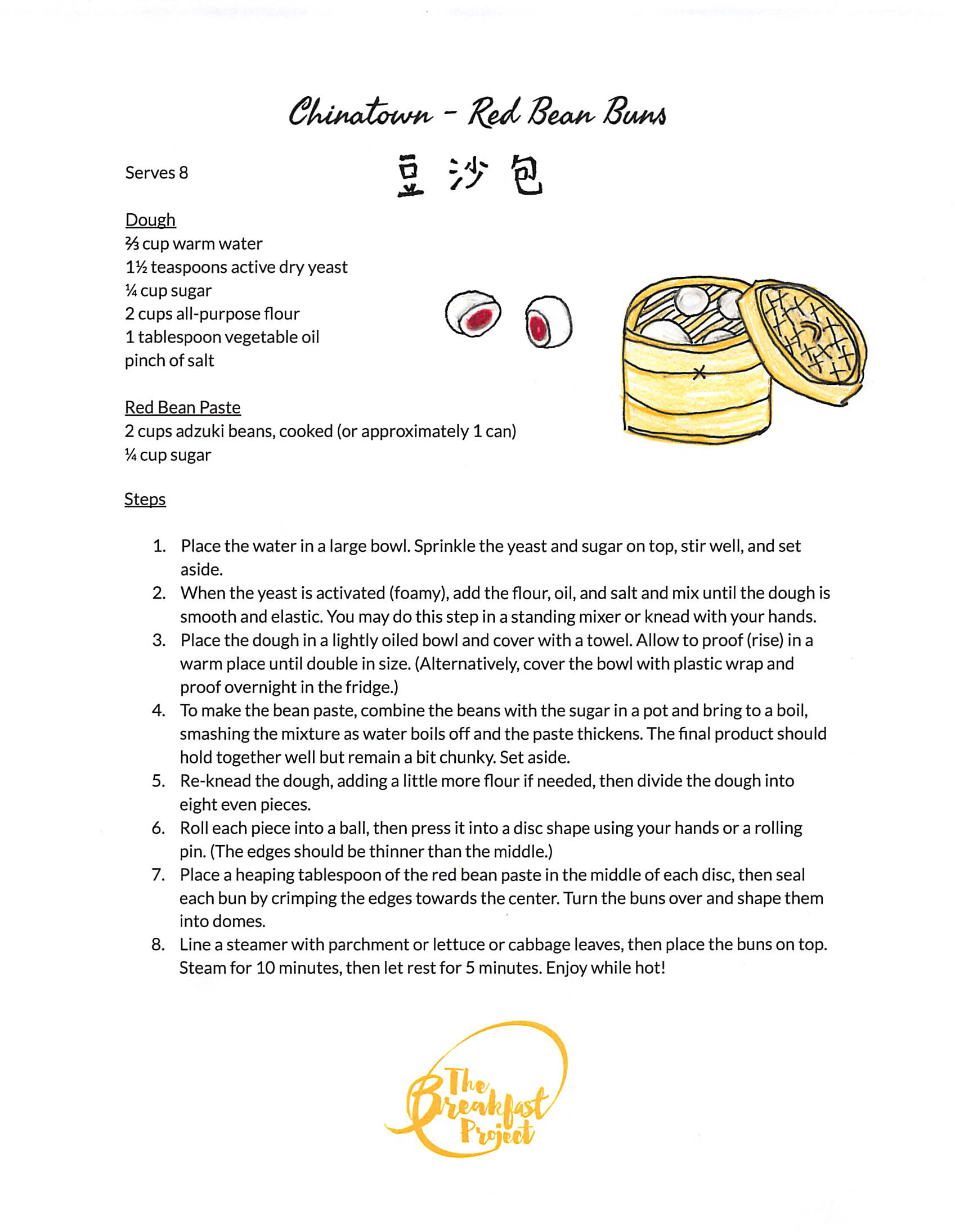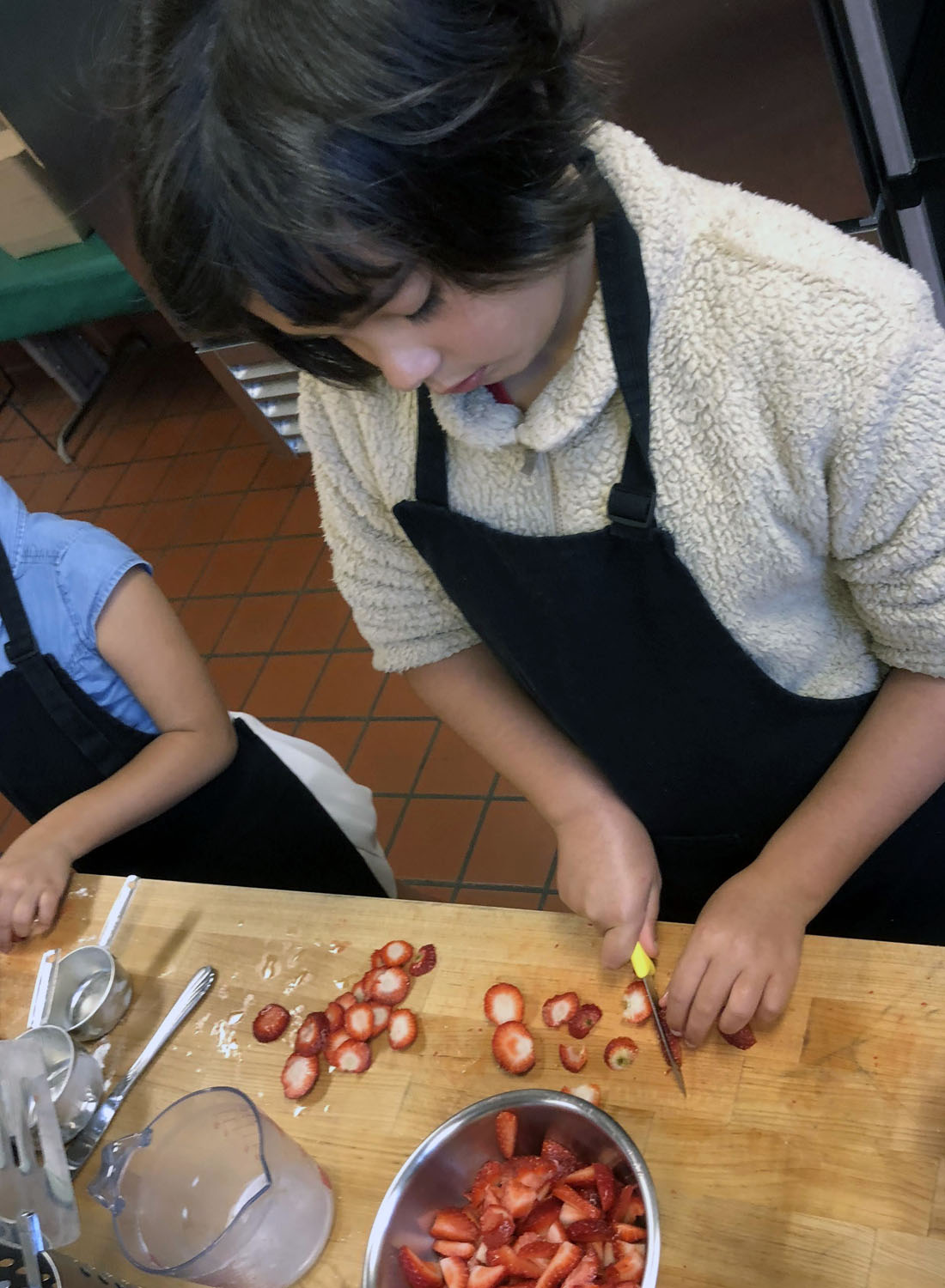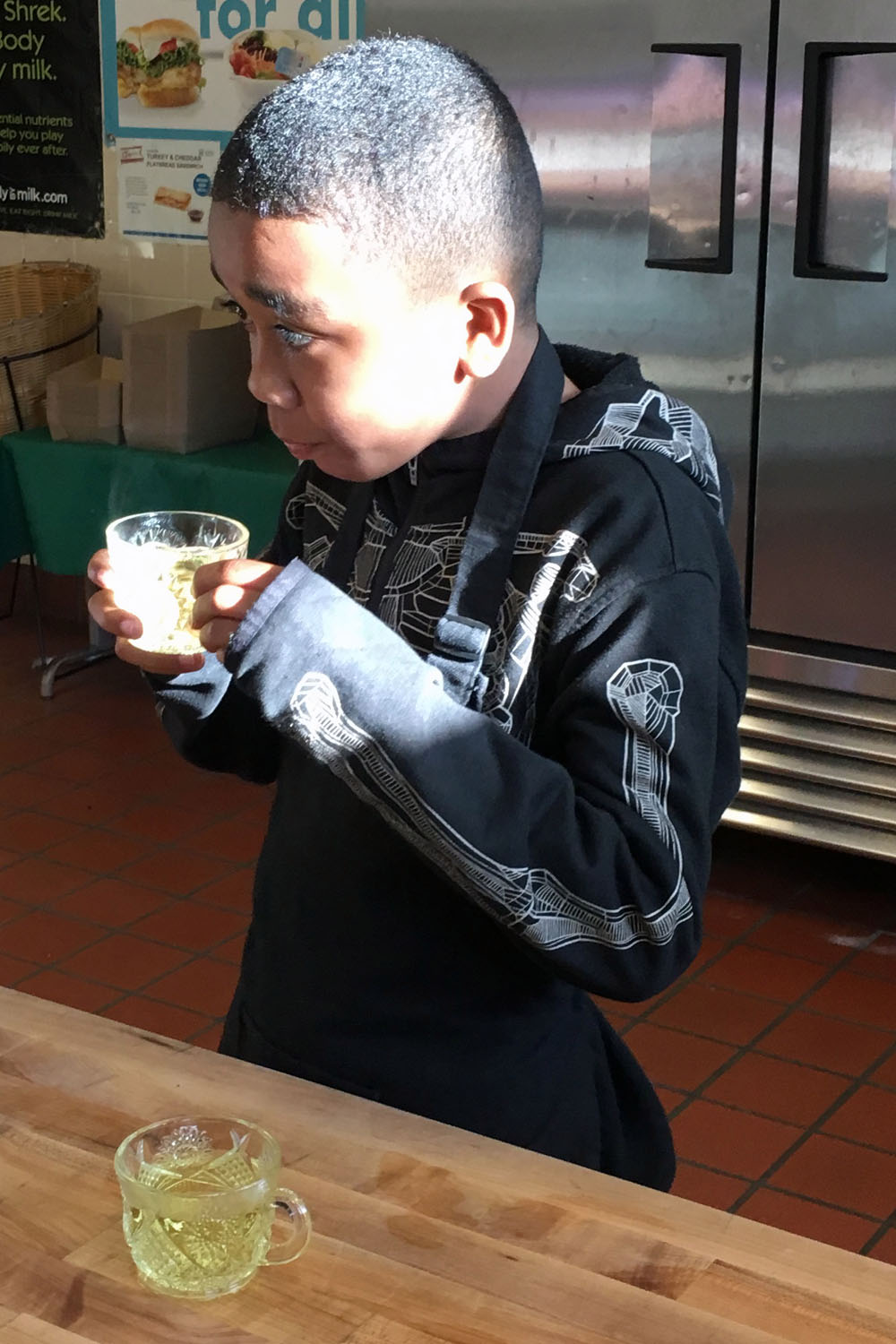We started off this week’s class hearing from students who have visited Puerto Rico and/or have Puerto Rican heritage. On Thursday, Miss Lizzie then talked about sofrito, which forms the base of many a Latin American dish, and pique, a traditional Puerto Rican hot sauce that features hot chili peppers and herbs steeped in vinegar. The pique Ms. Katie and I made in preparation for our lesson incorporated jalepeños, serranos, and the delightfully named “fireball” pepper.
Students chopped onions and peppers and pressed a lot of garlic to create the deep flavors of the sofrito. Then we ate rice cooked with sofrito with an optional dash of pique.
We made sure to make enough for students to take a small jar of sofrito home to their families. Please let us know how you used it - we love to hear from you. Miss Lizzie taught us how Puerto Ricans express themselves when they really like something: ¡Qué chévere!





























































































































































































